From Akhenaten To Vlad The Impaler, Artist Brings Famous Historical Figures To Life
Time travel might not exist, but artworks throughout the ages give us glimpses of the past. Paintings and sculptures outlive their subjects, and we in the 21st century can sort of see the famous faces of Julius Caesar and Cleopatra. And now, with the help of digital artists like Becca Saladin, we can see what those historical figures really looked like.
This highly skilled artist uses her talent to bring significant figures from history to life. She gives color and character to stone sculptures and gives paintings a realistic touch. Some are so lifelike, especially side-by-side with the source material, it’s spine-tingling. Join us as we take a look at what Napoleon and others would have looked like if they were alive today.
All images in this article are courtesy of royalty_now_ on Instagram.
Emperor Hadrian
Hadrian was born in 76 AD and is most famous for the wall (Hadrian’s Wall) that was constructed along the border of what is now England and Scotland. Although he never saw the wall himself, and these days it’s long gone, it remains a remarkable achievement.
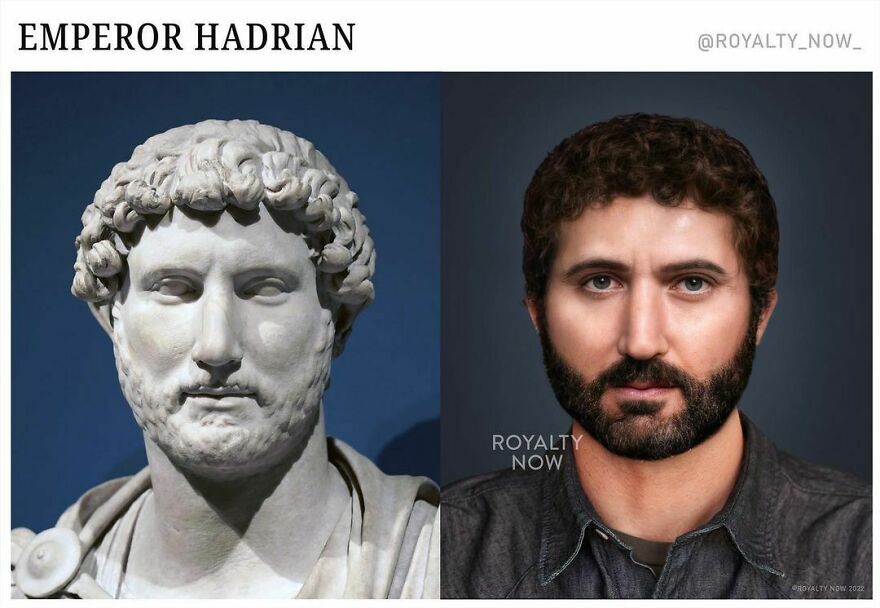
This image takes his hair and eye coloring from microscopic traces of pigment found on statues of Hadrian. This has enabled the artist to build up a representation that we can be fairly sure is an accurate and true likeness.
Josephine
This representation of Empress Josephine is based on the 1805 portrait by the artist Robert Lefevre. Becca chose this picture from several candidates due to its realistic depiction of her facial features. Having accurate originals to work with really helps the artist.
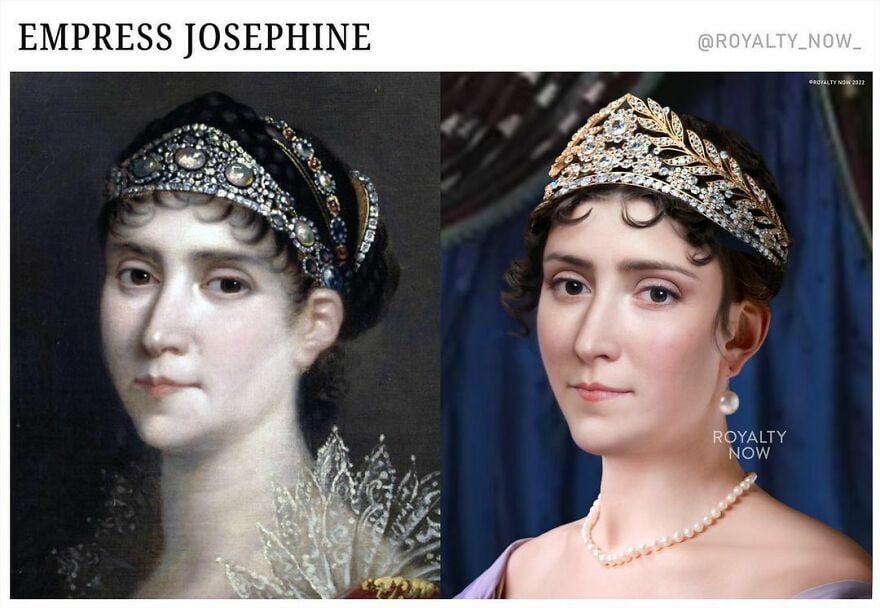
The delicate features of her nose, eyes, and mouth all combine to give the viewer the impression of a distinguished lady who also has a certain air of mystery about her. Since we’ll never know how accurate the originals were, there is indeed an element of mystery.
Napoleon
It’d be wrong to make a list of influential historical figures and not include Napoleon Bonaparte. It’s almost impossible to overstate the sway that he held over Europe during his lifetime. For this historical figure, the artist has produced two images.
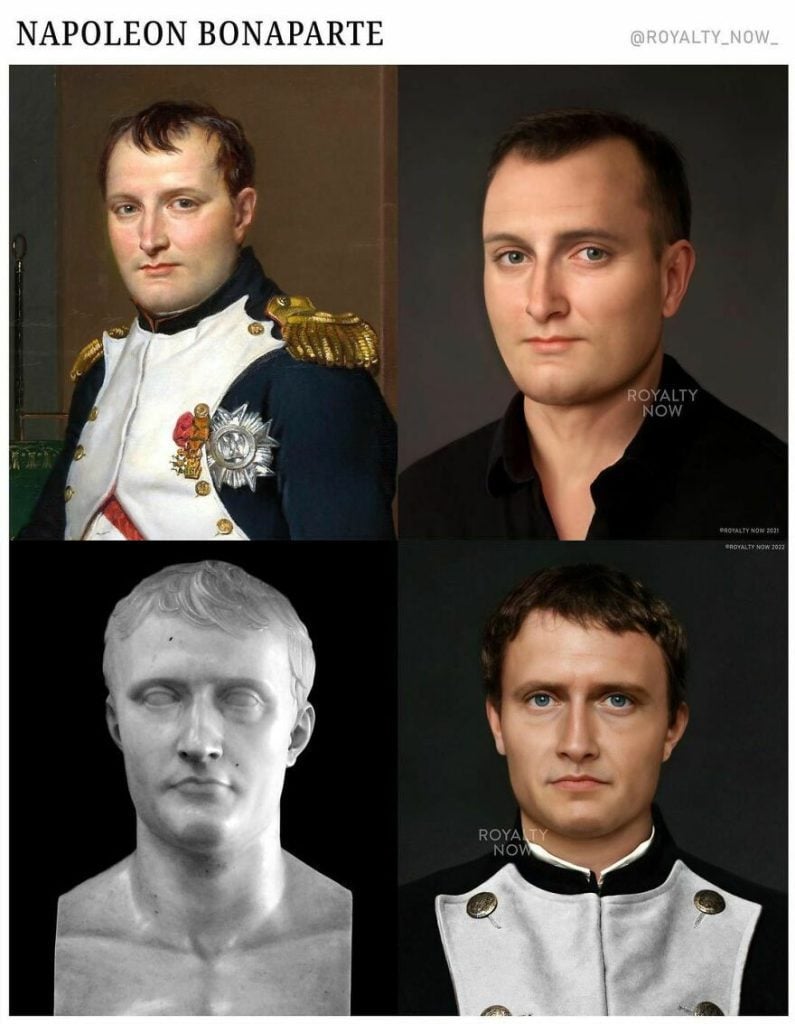
The top one is based on one of the many paintings that were done of Napoleon during his lifetime. The second image is based on Antoine-Denis Chaudets’ bust sculpture of the famous leader. Is it just us, or does the first rendering look like an actor’s headshot?
Marie Antoinette
Here we have another famous (or infamous) figure from French history; the bold Marie Antoinette. She was the wife of Louis the sixteenth, the final monarch of France. Louis and Marie Antoinette were notorious for their lavish lifestyle… and method of execution.
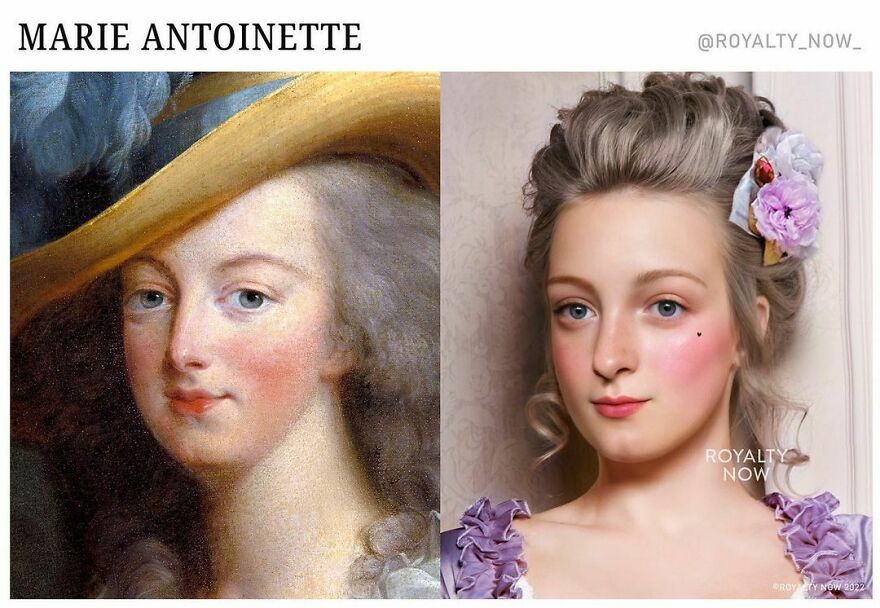
Both of them were executed during the French revolution. Interestingly there was a death mask made of her face by a waxworker, the famous Madame Tussaud. For this depiction, the artist combined the death mask with a portrait to produce a lifelike effect.
Antinous
Antinous was famously Harians’ lover, but apart from that, we know relatively little about this character from antiquity. One of the few things we do know is that his birthplace was in what is modern-day Greece. So Becca used that when giving her work color.

In contemporary sources, his hair is described as “almost purple,” which the artist has taken to mean very dark with a slight reddish tint. We’d love to see a “what if” version of him as an old man. Sadly, Antinous’ died under mysterious circumstances at the age of twenty.
Pocahontas
Despite being depicted many times in film and literature, there was only one contemporary image made of Pocahontas during her lifetime. So, the artist has supplemented this with extensive research into how the Powhatan would have dressed during that period of American history.

Pocahontas has become one of the most iconic women in all of history, and we think that it is fascinating to see what she may have looked like if we met her today. As with all these images, we can’t be 100% certain of its accuracy, but it’s as close as we’ll get without a DeLorean.
Eleanor of Aquitaine
This famous queen of the medieval period was renowned for her beauty, intelligence, and strong will. She was married to King Henry the second and was the mother of John and Richard, both of whom later became kings of England.
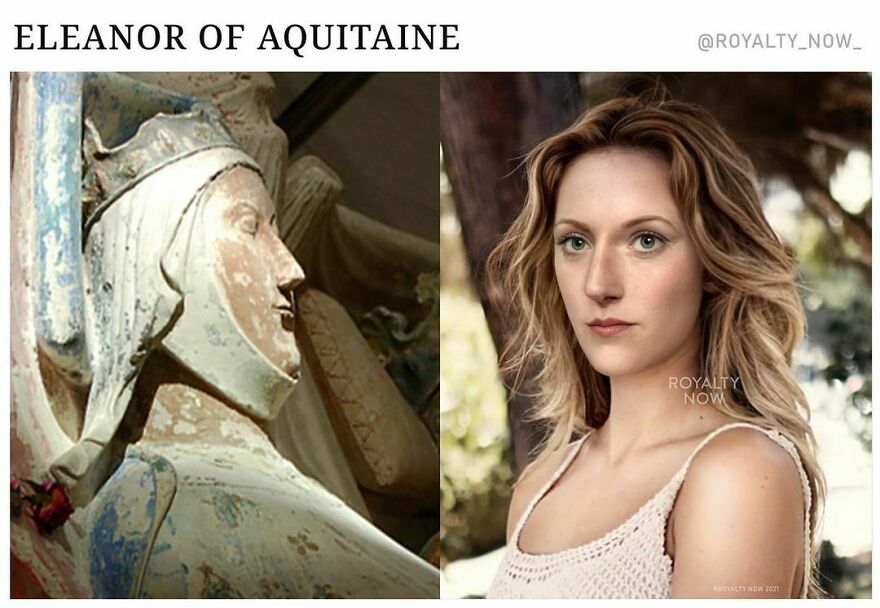
Because Eleanor was alive almost one thousand years ago, there are no surviving images of her. There are romanticized images of her, but we won’t ever know what (if any) features in those are accurate. Becca based this picture on the effigy on Elanor’s tomb.
Livia Drusilla
Livia does not have the best reputation out of all the figures depicted here. She was married to Augustus, the famous Roman emperor, and was said to be very manipulative and hold a great deal of power over him. As they say, behind every great man…
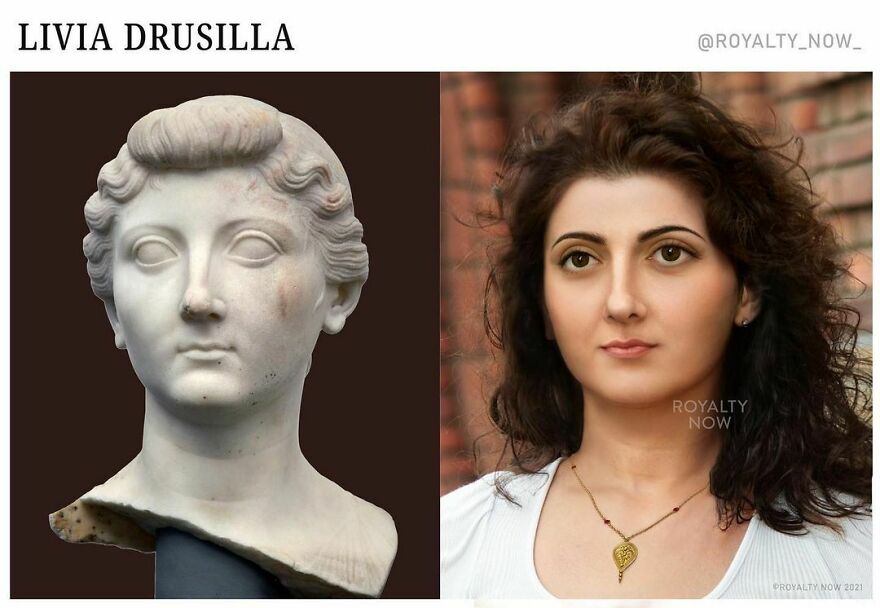
There is no recorded description of Livia’s hair or eye coloring. To make this rendering, Becca used her artistic license to produce this incredible image. We especially love the clothing and jewelry details. We wouldn’t be surprised to find this picture while scrolling on Instagram.
Lady Jane Grey
This one is based upon the Streatham portrait of Lady Grey Jane, which is supposedly the most accurate contemporary representation of her. She was alive during a very turbulent time in British history, and her life was short and tragic.
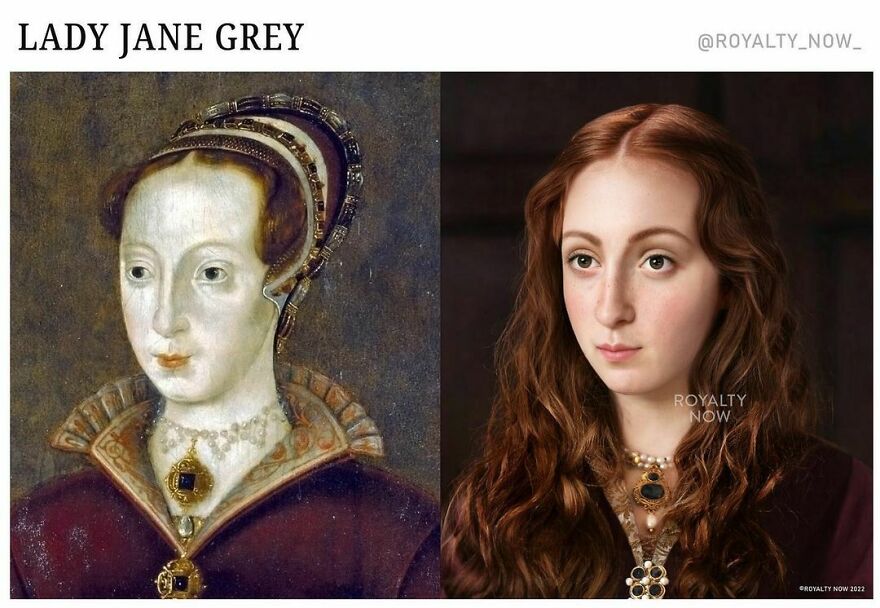
She reigned as queen for a mere nine days before being locked up in the tower of London and executed at the age of only sixteen. We love Becca’s take on Jane, particularly, letting her hair down, as most teenagers today like to do.
Grand Duchess Olga Nikolaevna of Russia
Olga was just twenty-two at the time of her death in 1918 at the hands of the Bolshevik revolutionaries. Famously, she wasn’t the only one to lose her life that day. Perhaps you’ve heard of Anastasia? Well, the young girl was Olga’s sister.

Olga is the first historical figure on our list to have actual photographs taken—not that it deters or dissuades a talented artist like Becca. For this lifelike portrait of Olga, Becca chose to use a forensic reconstruction of the royal’s head.
Elizabeth Bathory
Legend has it that Elizabeth Bathory was one of the most prolific serial killers of all time. She lived in Hungary in the early 1600s. She was accused of torturing and murdering hundreds of girls and women over a twenty-year period.
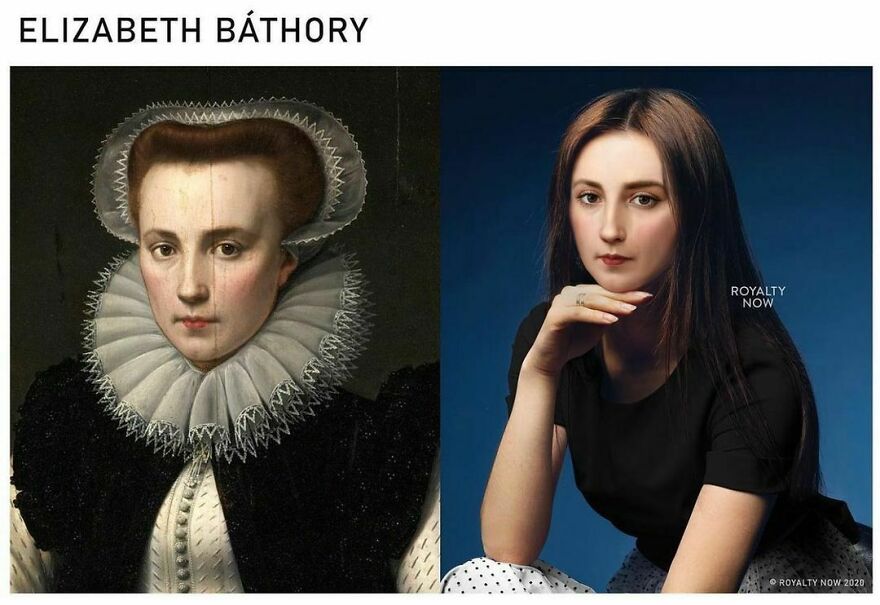
However, there is another school of thought that maintains that she was innocent and was the victim of a witch-hunt. To this day, nobody is entirely sure which version is truthful, but she is certainly an interesting character and has become part of folklore.
Cleopatra
One of the most famous women to have ever existed, Cleopatra was an iconic Egyptian queen that has sparked the imagination for millennia. Whilst we often would think of her as having a darker complexion, research suggests red hair was not uncommon.

She was famed for her beauty and striking features, and we feel that the artist has really captured this essence in her work. It does take a bit of getting used to—seeing Cleopatra depicted with flame-red hair—but we think it suits her!
Marcus Aurelius
Known as the “philosopher emperor,” Marcus Aurelius ruled the Roman empire for nineteen years between 161 and 180 AD. At that point in time, the Roman empire was at its largest, and he had between 70-80 million subjects under his command.

Not a lot is known about his appearance other than the fact that he was of Italian and Spanish heritage, so a fair amount of guesswork went into his hair and eye coloring. This likeness reminds us of famous movie stars more than old Roman emperors.
William Shakespeare
Probably the most famous writer of all time, William Shakespeare is well-recognized both in his literary works and his picture. There were several paintings of him, and we bet that most people are at least partially familiar with his image.
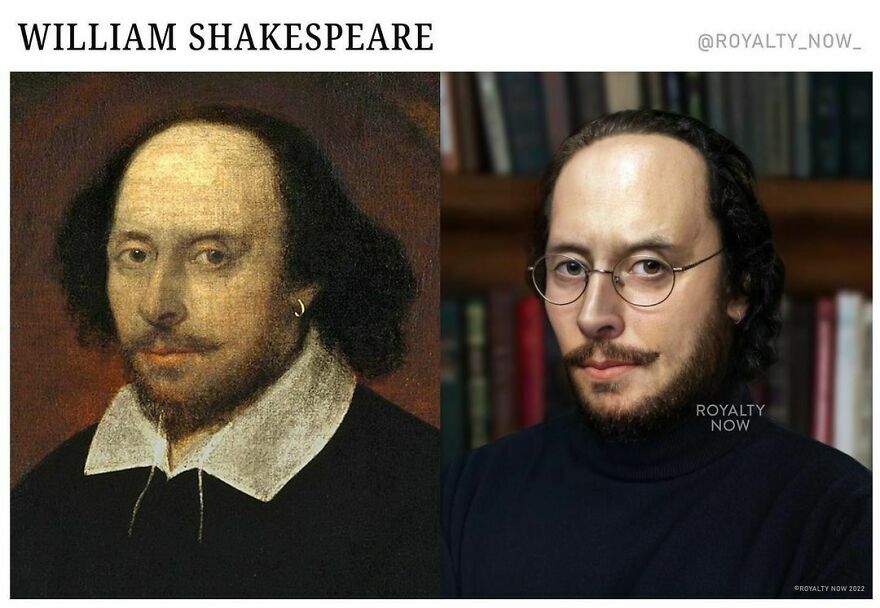
It’s interesting that the rendering of the author reflected his profession in his clothes, even in a modern-day scenario with a 21st-century wardrobe. The black turtleneck and glasses scream hipster, and the bookshelf in the back is the perfect finishing touch.
Lady of Elche
This is an interesting one and also one which continues to stir up debate and controversy among historians. The sculpture on which this artwork is based was discovered in Spain, although nobody is quite able to say who it is of.

The most likely explanation is that she is a depiction of the Goddess Tanit, who was worshiped by the Punic-Iberians in ancient times. The sculpture was said to be painted in bright colors, which explains her bright red clothing in the rendering.
Queen Nzinga
Nzinga was a warrior queen who ruled over the kingdoms of Ndongo and Matamba, located in what is now Angola. The majority of her reign—her whole life, in fact—was spent fighting an on-and-off war against the Portuguese who were attempting to colonize her land.

The image on the left is a posthumous portrait that was made in the 1800s. This picture was itself based upon contemporary sketches, so we can be pretty sure that this is as accurate as we’ll ever get. Becca sure did her justice!
Vlad the Impaler
The fearsome Vlad the Impaler is a notorious figure who was described as strong, stocky, and terrible in appearance. The portrait that this one is based on is not contemporary, but the source material was thought to be a contemporary work.
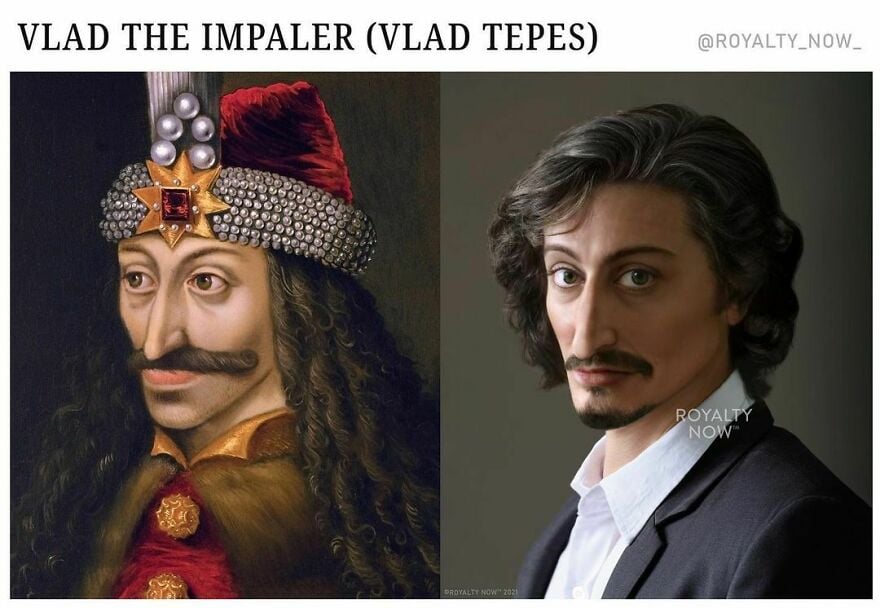
There is some debate over whether this portrait was made by his enemies in order to give him a slightly cartoonish image. We’re not convinced as we find him quite a sinister person in his appearance. Those eyes don’t look too kind!
Alexander the Great
Alexander the Great is one of the most visually represented figures in all of antiquity. His image appears in sculptures, drawings, and on coins. For this reason, this entry is perhaps one of the most accurate of all the work Becca has produced.
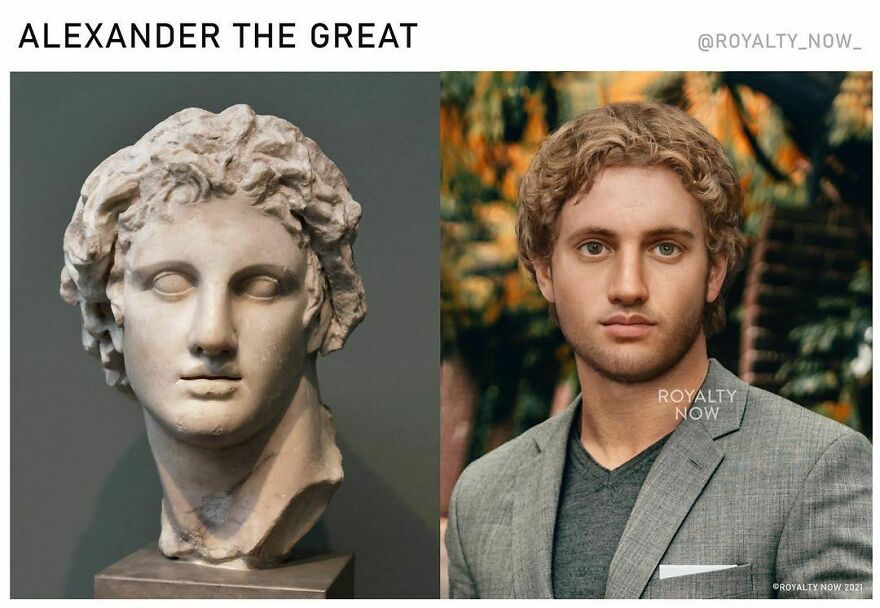
There are also a significant amount of written descriptions about him, so we can be pretty sure that his coloring and features are pretty much how they would have been thousands of years ago when he conquered most of the known world.
Nefertiti
One of the most famous and successful of all of the ancient Egyptian rulers, Nefertiti has taken up her rightful place in the pantheon of truly iconic and remarkable figures from ancient history. This image is based on the Berlin bust.
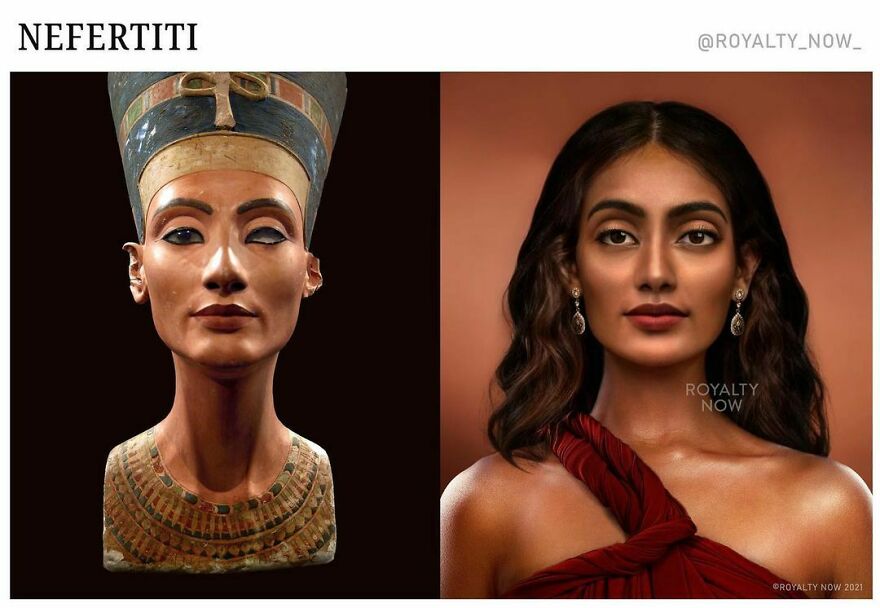
The bust depicts her in full regalia, which is an obvious reference to her wealth and importance at the time of her death. We think that the artist has brilliantly captured the essence of her power, poise, and influence that she held.
Genghis Khan
One of the most fearsome and bloodthirsty of all the historical figures on the list and one who surely deserves his reputation, Genghis Khan was the leader of the Mongol empire. His empire was, at its peak, the largest ever contiguous empire in history.
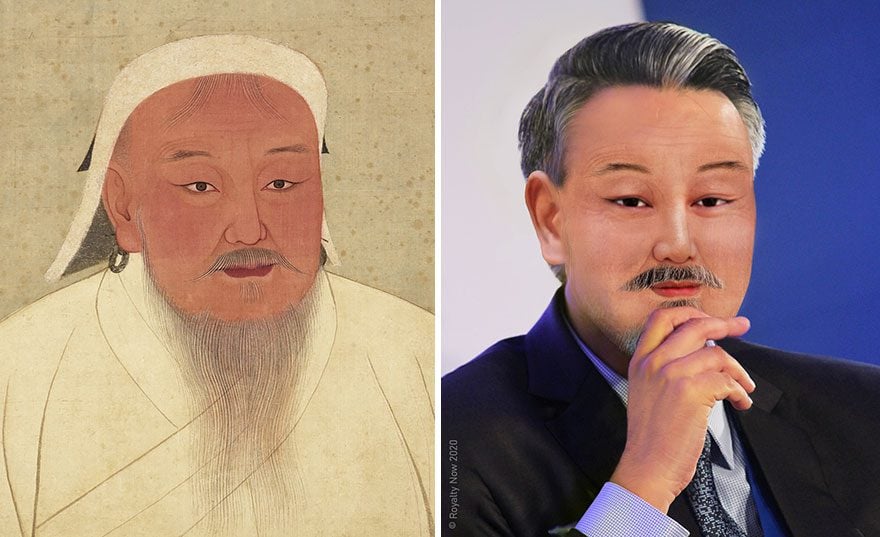
He was born at some time between 1155 and 1167, and in this digital reimagining, he is shown wearing a suit and gives off the impression of being a powerful CEO! The salt and pepper hair somehow make him seem more intimidating.
King Tut
The world-famous boy king, whose tomb was discovered almost entirely intact in 1922, has gone on to become something of an icon of ancient Egypt with all its mystery and wonders. In actual fact, he was a relatively minor leader, having died very young.
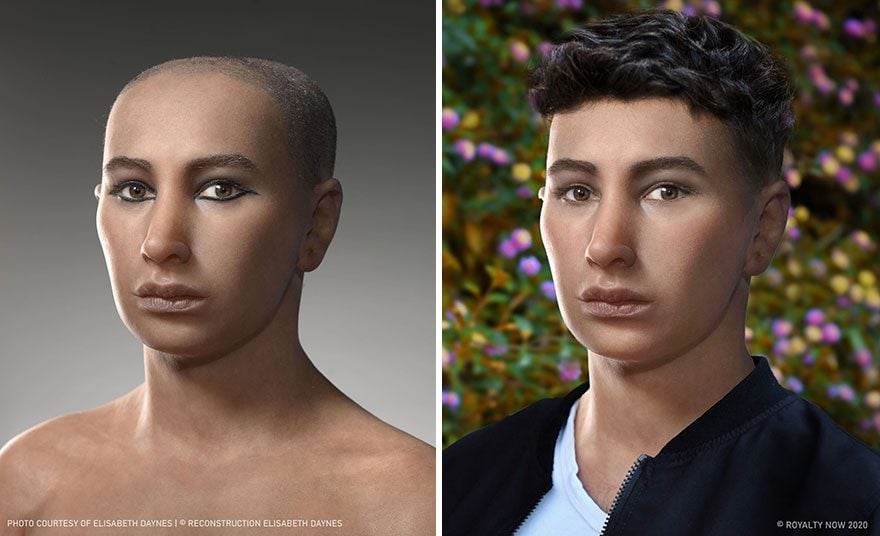
This representation perfectly evokes his youthful looks. While the artist’s source material is also a digital rendering, Becca used her skill to spruce it up and give him a more modern look. Although it is not depicted in this image, King Tut was thought to suffer from scoliosis.
Lucrezia Borgia
Lucrezia Borgia was a noblewoman of Italian and Spanish heritage and was a member of the infamous Borgia house. Lucrezia was a very smart and intelligent woman who served as the governor of Spoleto. This is unusual because that was a position traditionally held by men.
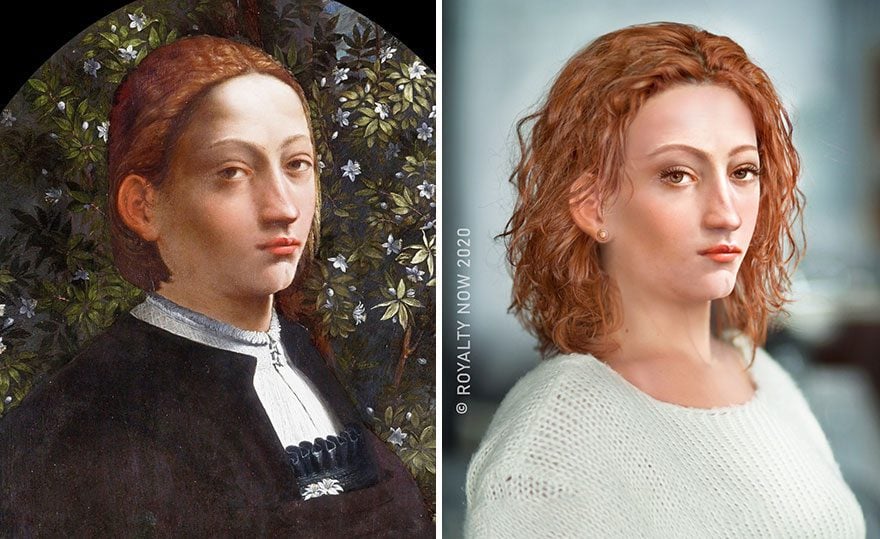
This image is based on the only known confirmed portrait of her. Contemporary sources describe her as having blonde hair, though we think this version is more “strawberry blonde.” There is something fiercely intelligent about her eyes. Her beauty was renowned, and we feel this is conveyed here.
Mary Queen of Scots
This image of the famous Queen was produced when she was a teenager, probably sixteen years of age. Around this time, she married Francis the Dauphin of France. There are many known portraits of her in existence, but we think this one was the perfect choice.
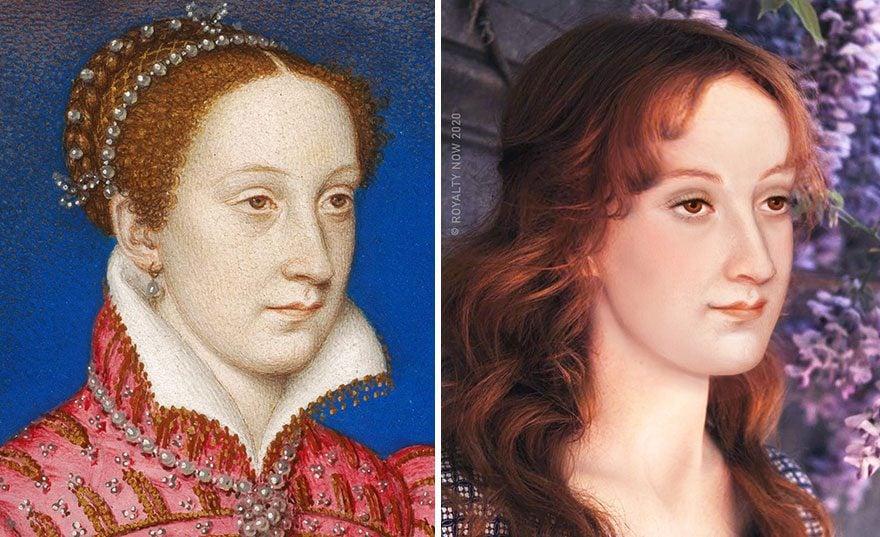
It perfectly encaptures the regal grace and poise that she was famous for at the time when she was alive. Her red hair is shown hanging loose in this image as opposed to tied up. It definitely fits the vibe of a teenager, don’t you think?
Botticelli’s Venus (Simonetta Vespucci)
Simonetta Vespucci was an Italian noblewoman from Genoa. She was known during her lifetime as being the greatest beauty in all of Italy and was thought to be the model for several paintings by many well-known Italian artists. A less-deadly Helen of Troy, if you will.
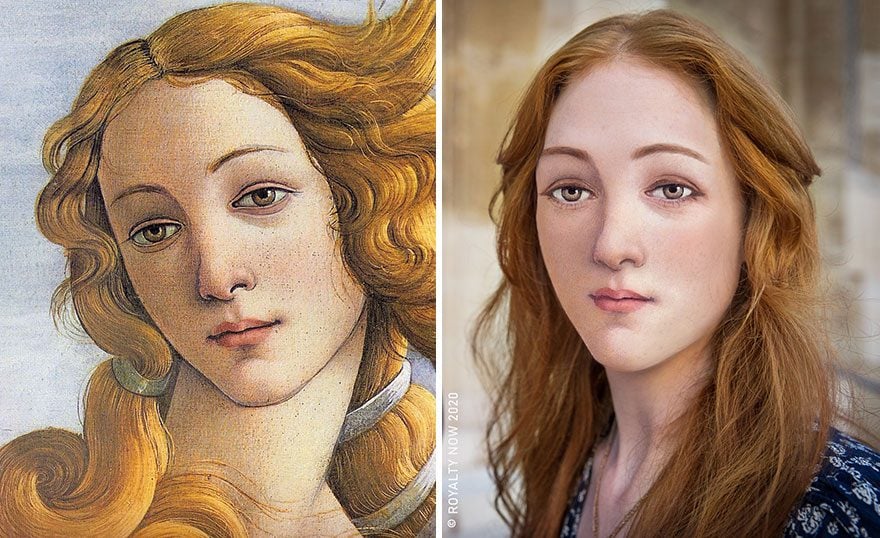
One of these was the artist Sandro Botticelli who used her as the model for his painting of Venus. The artist has done well at expressing her beauty, and we can get an idea of what she’d look like if we saw her at the library today.
Cleopatra
Here we have a slightly different interpretation of the famous and iconic ancient Egyptian queen. Whereas the previous entry in our list showed her as having reddish hair, this one is perhaps more in keeping with the traditional representation of her.
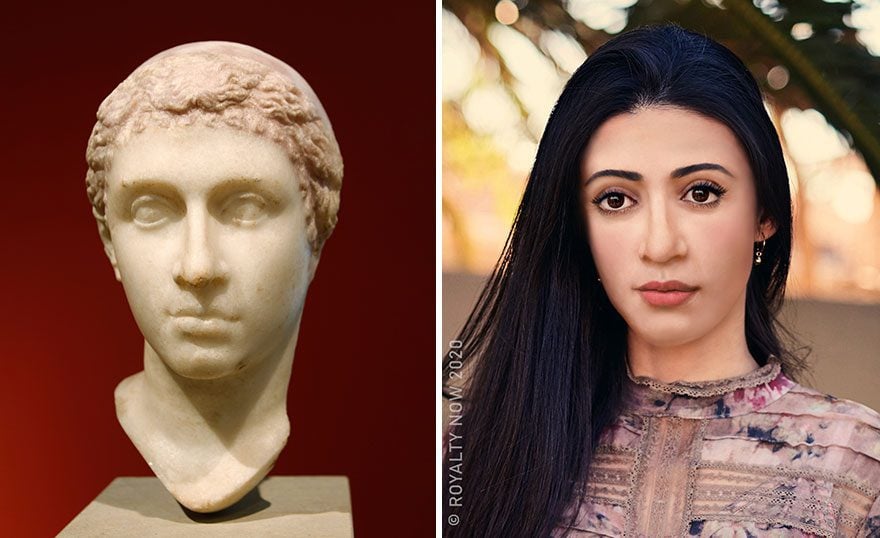
Cleopatra is an iconic historical figure who has been portrayed multiple times on stage and on screen. We’re glad to add one more rendition of her to the list of modern-day takes on Cleopatra. Becca’s rendering is severe yet stunning.
Louis 14th
Louis 14th was famously known as the Sun King and was France’s longest-reigning monarch. He ruled the country from 1643 until 1715. Louis was infamous for his excessive and expensive lifestyle, as well as his vanity—the man cared deeply about his image.
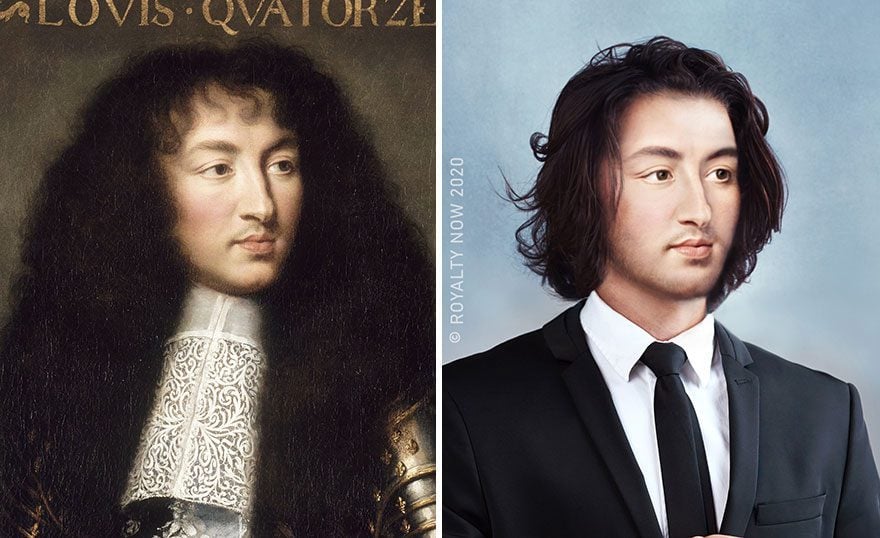
For this reason, paintings of Louis are thought to have been heavily idealized as they made up a portion of the propaganda and how he projected his image to his subjects. Because of the heavy editing, we’ll likely never know what he looked like.
Shaka Zulu
Shaka Zulu was a powerful South African leader who ruled over the Zulu people between 1816 and 1828. He was formerly a soldier and was well known for his bravery and fearlessness in battle. When he became king, he expanded the Zulu empire.
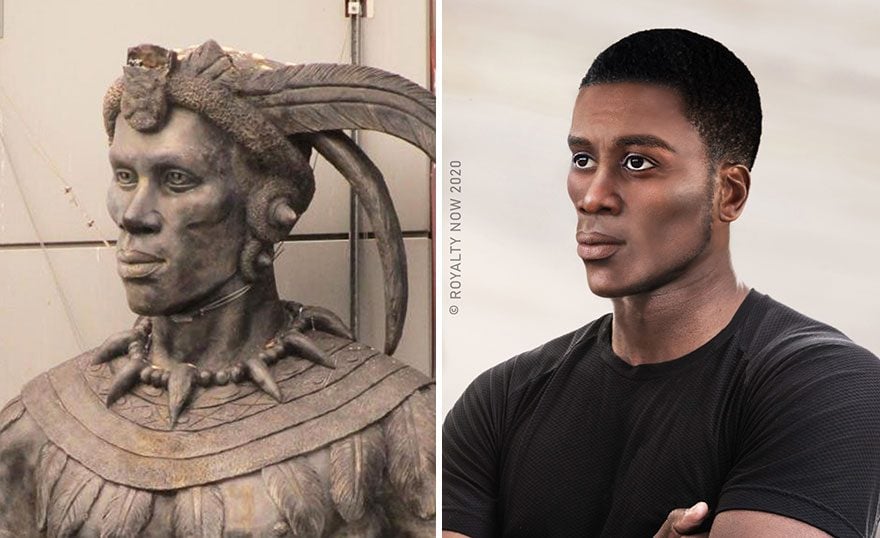
Ultimately he met his end at the hands of his half-brothers who murdered him and assumed power. Despite his relatively short reign, he is renowned for his diplomatic and political powers. Even in a plain black tee, he exudes power and assuredness.
Hatshepsut
Here we have another representation of one of the great rulers of ancient Egypt. Hatshepsut was the longest-reigning of all the female pharaohs and is regarded as being one of the most successful of all the leaders from that civilization.
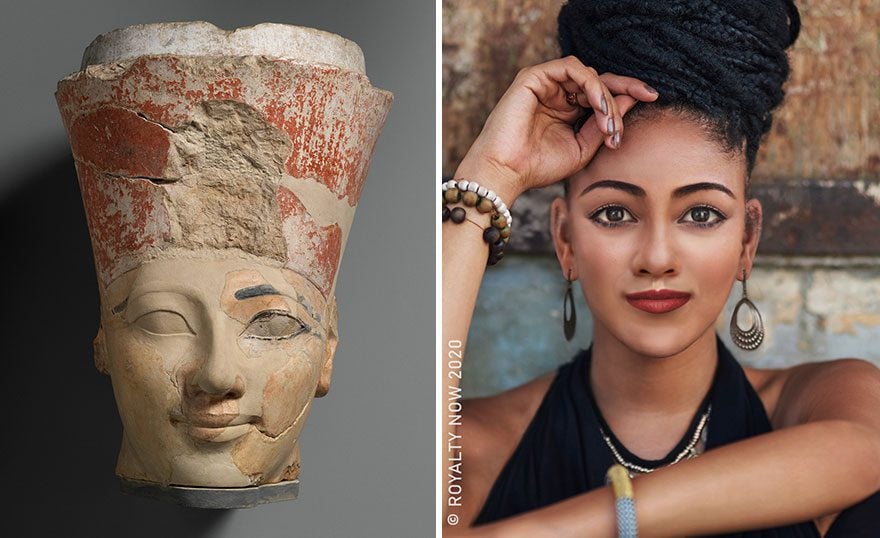
She was instrumental in establishing trade relations with neighboring kingdoms and invested wealth into building up the infrastructure of her kingdom. Behind that dainty smile is the mind of a powerful and successful leader—something Becca managed to perfectly capture in her modern-day rendering.
Shah Jahan
Shah Jahan was the fifth Mughal emperor and became ruler in 1628. As a child, he was considered to be extremely intelligent and showed a great deal of promise in his early life. That seemed to remain true as he was a successful emperor.
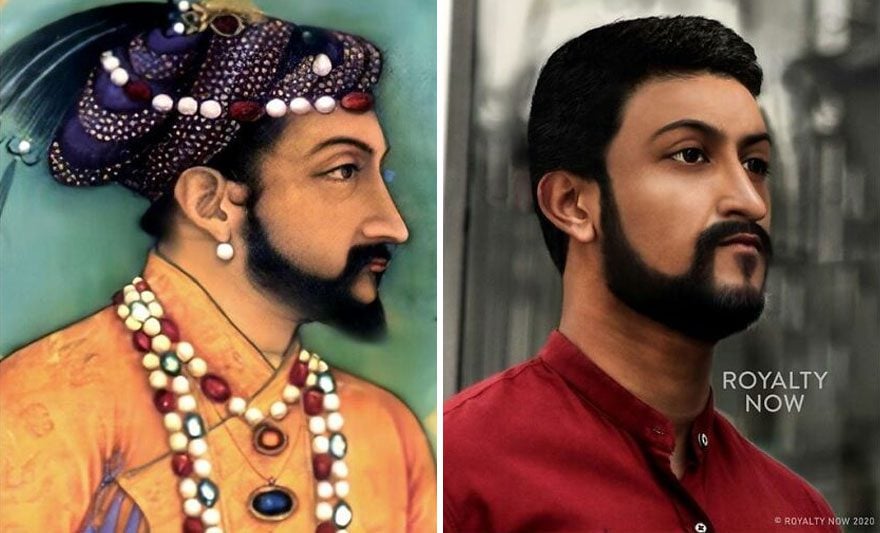
He reigned for thirty years, during which time the empire went from strength to strength. He is most famous for building the Taj Mahal for his wife, Mumtaz Mahal. This was his defining achievement and is an enduring legacy he left for people all over the world to behold.
Suleiman the Magnificent
Suleiman the first was known as “Suluieman the magnificent” due in no small part to the longevity of his reign. He was the Sultan of the Ottoman empire from 1520 until his death in 1566. Under his leadership, the empire ruled over 25 million subjects.
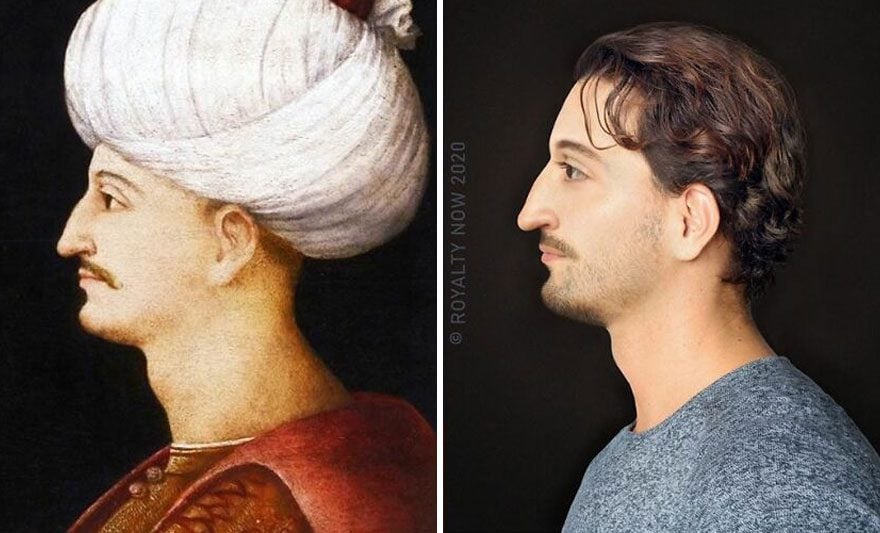
He was considered to be one of if not the greatest of all the sultans. During his reign, he launched many attacks against the Christian powers in Europe and around the Mediterranean and achieved great success. He introduced huge changes to society and was well-loved.
Akhenaten
Born in 1380 BC, Akhenaten was a Pharaoh who ruled Ancient Egypt between 1353 BC and 1336 BC. One of his wives was actually the famous Nefertiti—we met her before. He is best remembered for the religious revolution that he implemented.
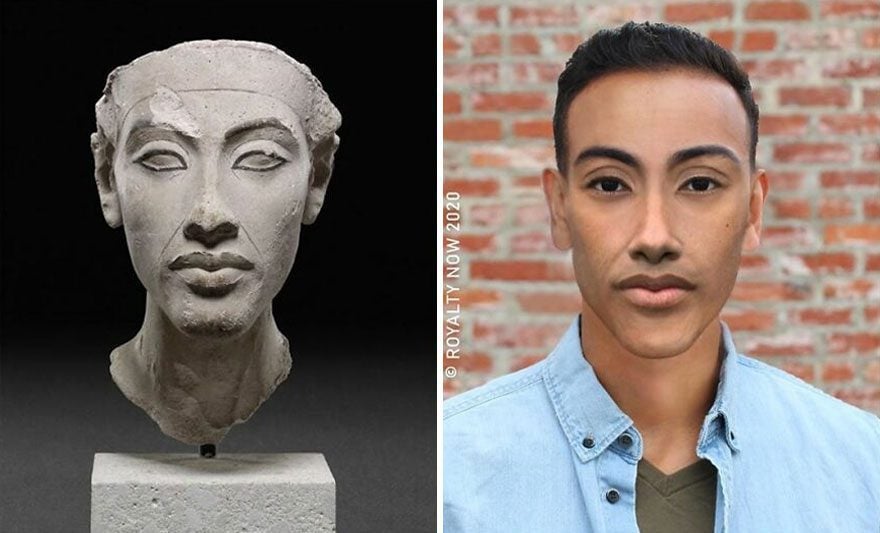
This religious revolution involved the casting away of the multiple gods of the previous system and replacing them with a monotheistic religion based around the worship of the sun god, Aten. This is actually the reason why he became known as Akhaten.
Henry Viii
There have been countless queens and kings in Europe, but few are as famous as Henry Viii. Because of this, it is truly fascinating to see what he may have looked like in real life. This image is based on the famous Holbein portrait.
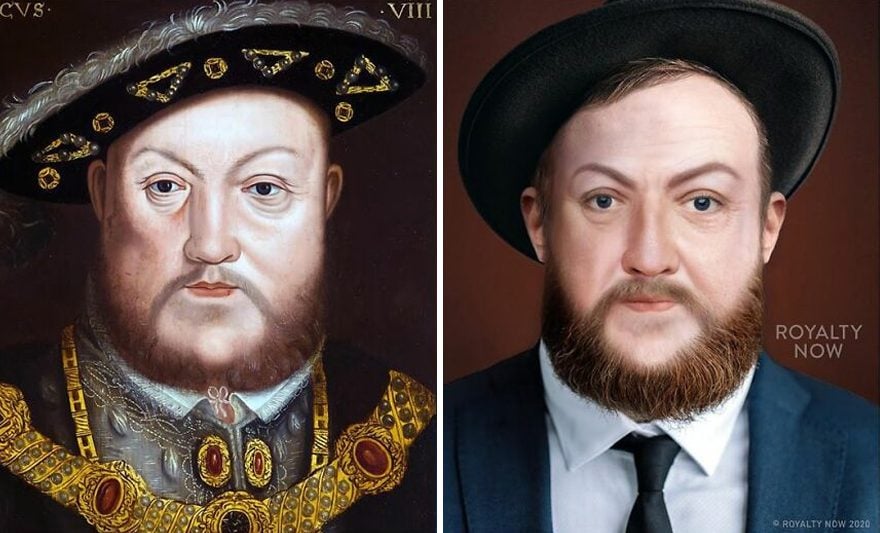
Famously, Henry was known to have vast appetites for food and drink (and wives!) and we really feel that these characteristics are reflected in the artist’s interpretation. The distinctive eyes and the looping eyebrows seem to keep with the original.
Aristotle
Aristotle is known as one of the most highly regarded philosophers and thinkers in human history. He studied under the tutelage of Plato and was very famous in his own lifetime. Because of this, there are many surviving busts of him.

There is no surviving description of his coloring, but the artist seems to have cast him as a middle-aged man which seems to be in keeping with his career as a lecturer. That is certainly befitting of one of the most influential thinkers of all time.
Catherine of Aragon
Catherine was the first of Henry Viii’s wives and was married to him until their annulment in 1533. The Spanish-born queen was thought to have been one of the most beautiful women in Europe during her years as queen of England.
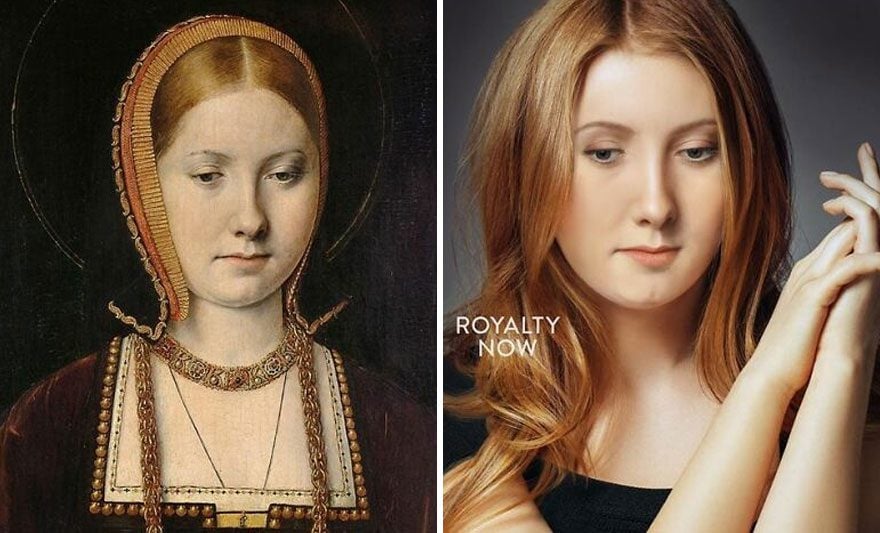
The delicate features and wavy strawberry-blonde hair certainly reflect that impression of her. The clasped hands are a nice touch to show the dainty features queens were supposed to portray. This wasn’t her last image, though. She died in 1536 at the age of fifty.
Beethoven
This image of the famous and influential composer Ludwig Van Beethoven is based upon a portrait that was taken when he was forty-nine years old. He moved to Vienna at the age of twenty-one and soon gained a reputation for his gifts.
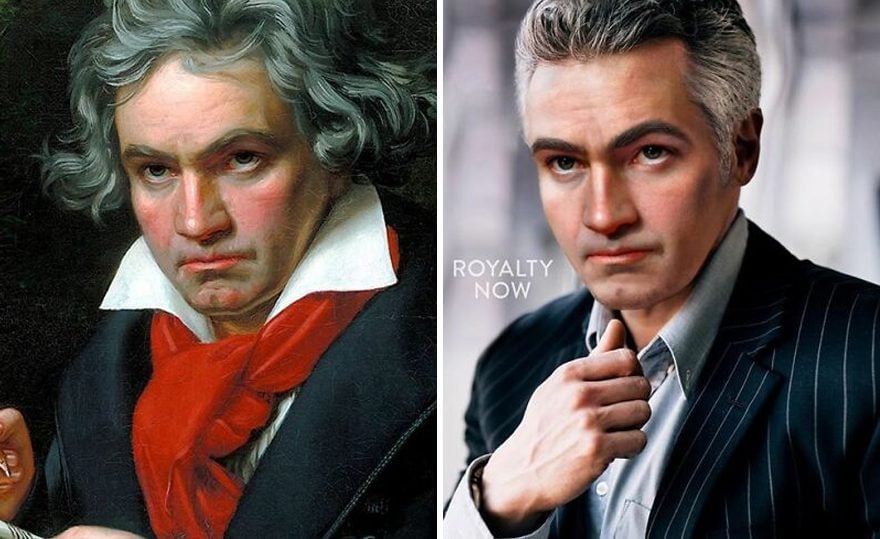
Interestingly experts in classical music generally agree that Beethoven produced his best work around the time of this portrait, a time in his life when he was actually suffering from deafness! His music remains some of the most popular of all time.
Cyrus the Great
Cyrus was the founder of the Achaemenid, which spanned the length and breadth of the region we now call the Middle East. He expanded his empire by conquering neighboring nations through the great military strength of his empire—a common backstory in many regions on Earth.
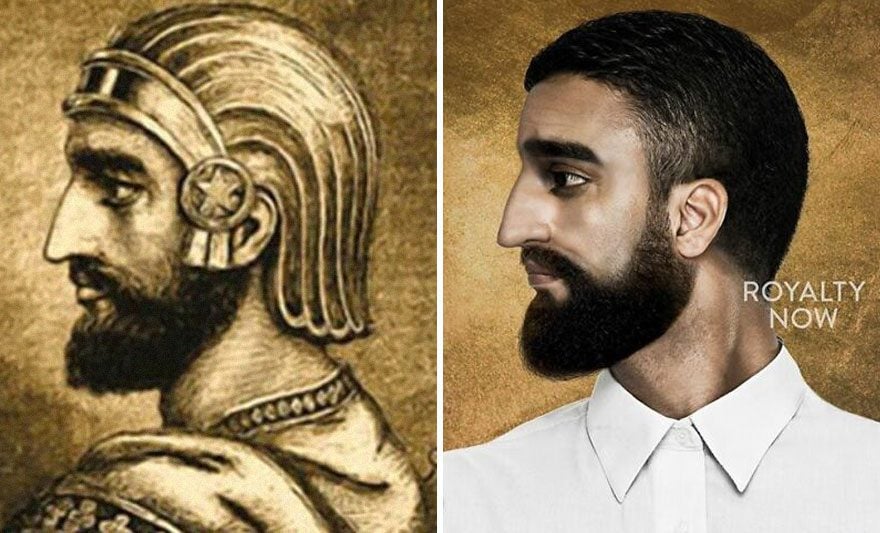
Famously, he allowed the native peoples to keep worshiping and performing their respective religions and customs. This made him a popular ruler and helped the empire to retain control even when the armies moved out. He is seen almost as a cult-like figure in modern times.
Elizabeth the First
Elizabeth the First is probably one of the most famous and iconic of all the monarchs in Britain’s entire history. She had a very distinctive look, with her powder-white skin and elaborate orange hair. This was actually makeup and a wig!
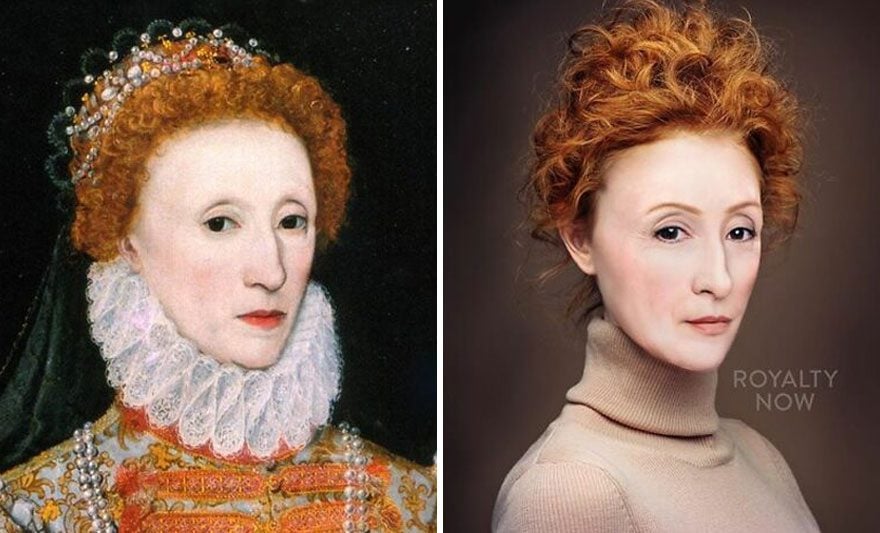
Elizabeth knew the importance of how her image was portrayed to the people, and this is something that the artist has managed to convey in the image he has created here. There is something quite ruthless in her eyes, and her features look sharp.
Catherine the Great
The artist based this image on a portrait of Catherine the Great that was painted when she was in her mid-thirties. She was the ruler of Russia between 1762 and 1796 and is the country’s longest-serving female ruler. Her portrait rightfully exudes confidence.
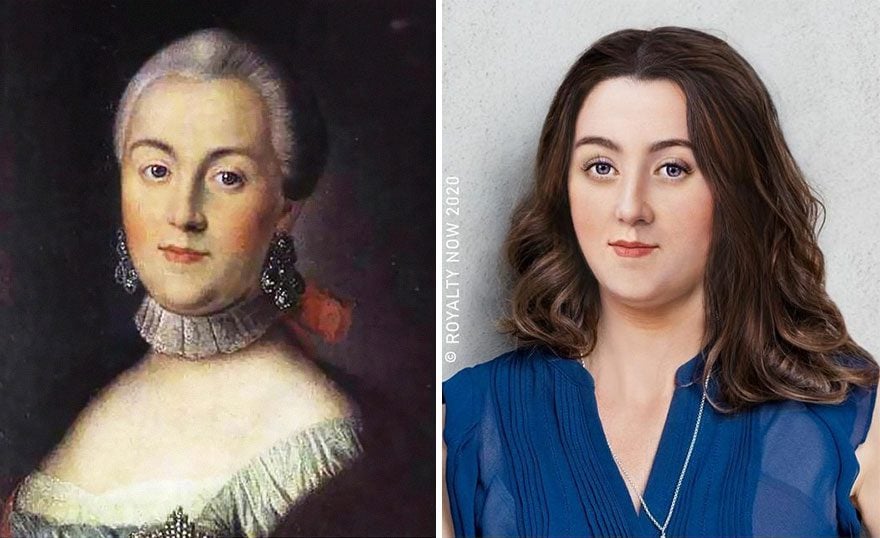
There is some debate over her natural hair color. While all contemporary sources say she had blue eyes, her hair color is not so definitively labeled. The artist has chosen a dark brown which seems to fit her quite well, if you ask us.
Queen Victoria
This is a fascinating example of the artist subverting our preconceived notions of what a historical figure should look like. When we think of Queen Victoria these days, we see her based upon the iconic pictures of her in later life.
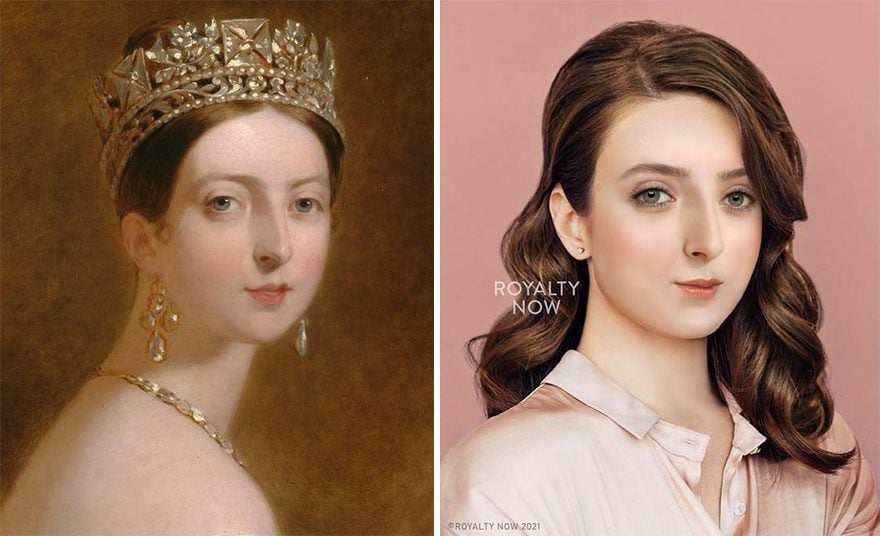
This image is based on a portrait that was painted of her when she was just seventeen years old, and the contrast is pretty extreme. She looks fresh-faced and slenderly built. We love how the artist plays with what we are expecting.
Saladin
Saladin was a famous Sultan and crusader and is well known for his battles with Christian crusaders around Jerusalem. He was a fearsome warrior, but he still commanded respect from allies and enemies alike for his chivalry. He famously founded the Ayyubid dynasty.
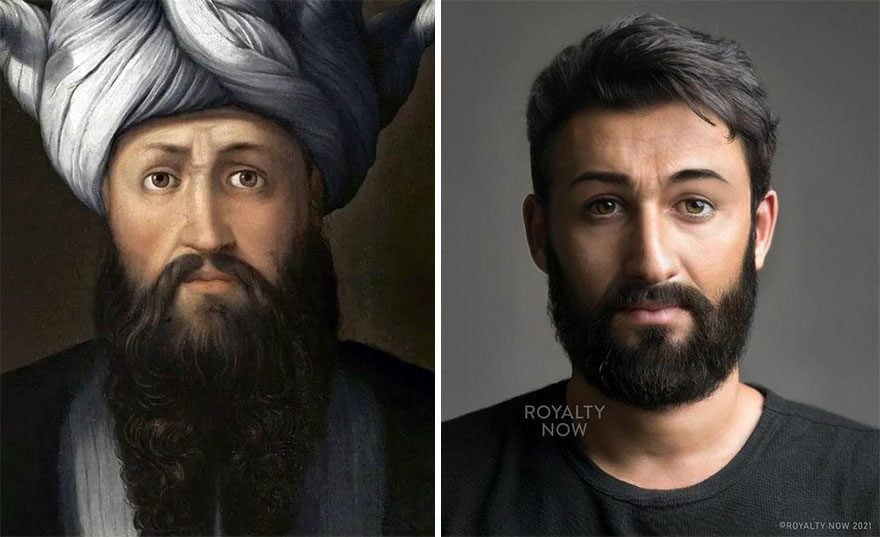
There are no surviving images of Saladin from his lifetime, so the artist has based his interpretation on a painting that was done centuries later. Because of this, there is no way to judge the historical accuracy of this image, brilliant though it is.
Joan of Arc
Since there is not a single contemporary portrait made of Joan of Arc, Becca has employed a degree of artistic license in his depiction of the famous Joan of Arc. She has based a lot of this work around descriptions of her.

If you forget, let’s recap her story. Joan claimed to be acting under direct instruction from God and became a prominent and great military leader who transgendered the typical gender roles of her time. She was made a saint and is commonly called the savior of France.
Mozart
Another famous composer, Wolfgang Amadeus Mozart, was a child prodigy who went on to become one of the most esteemed and revered composers of all time. There were several paintings made of him during his lifetime, and he was very much an early celebrity.

The interesting thing is that many of his portraits vary significantly in their appearance, and so the artist has had to pick one and base her work on that. The one thing that the portraits have in common is that he had blue eyes.
Girl with a Pearl Earring
This one is slightly different in that it is based on a world-famous painting rather than a direct historical personality or figure. It was painted in 1665 by the artist Johannes Vermeer and is his most well-known work of art.

It is a type of painting that was known as a “tronie,” which is a picture that is based upon the artist’s imagination and not directly on a physical person. The unnamed woman is meant to represent the ideal of female beauty, according to the artist.
Mona Lisa
Perhaps the most famous painting in the whole world, the Mona Lisa is often considered to be Leonardo da Vinci’s crowning achievement. There’s an air of mystery that surrounds the lady who modeled for this iconic picture. We love the interpretation shown here.
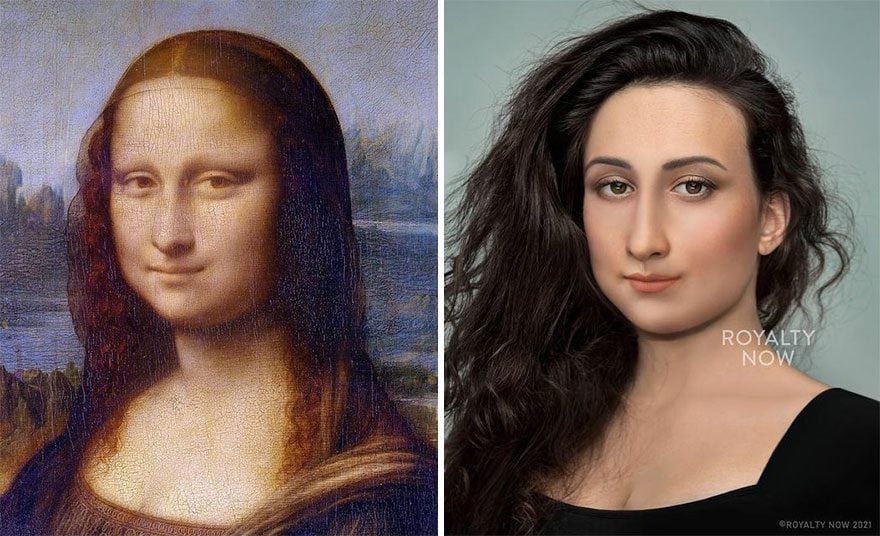
The model on which the Mona Lisa is based is unknown, but we really feel that the artist has managed to capture and express a real warmth and humanity in this image. This is a really interesting example of the artist’s skill.
Leonardo Da Vinci
Speaking of the famous Italian, this is based upon a self-portrait that the artist sketched of himself in 1512. Da Vinci is one of the most influential and iconic of all figures in history and is frequently considered a genius.
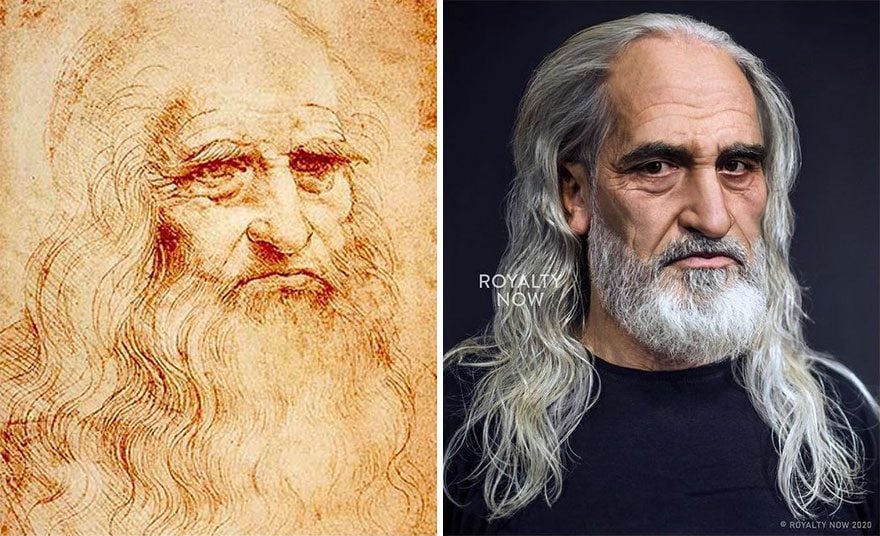
Despite his status as one of the most well known people in the world there are relatively few surviving images of him around today. He was thought to have brown hair in his youth but this painting shows him as an older man. Stunning work!
